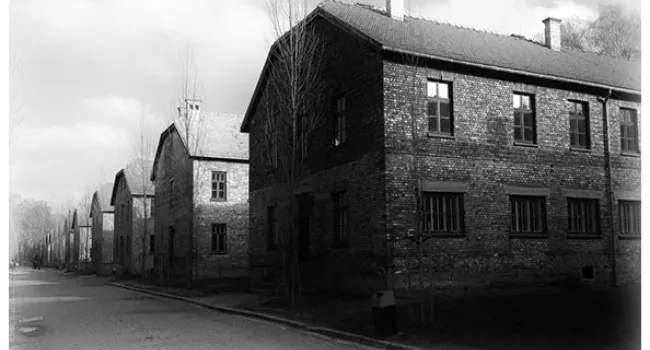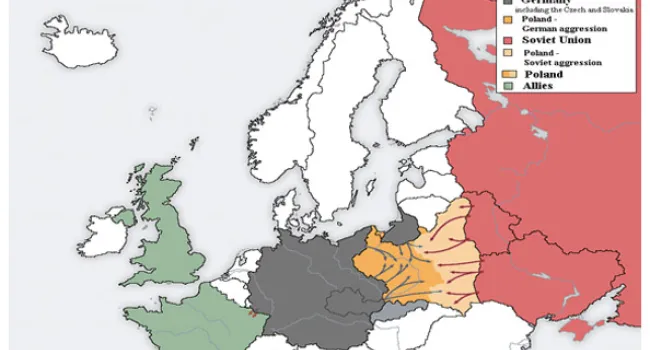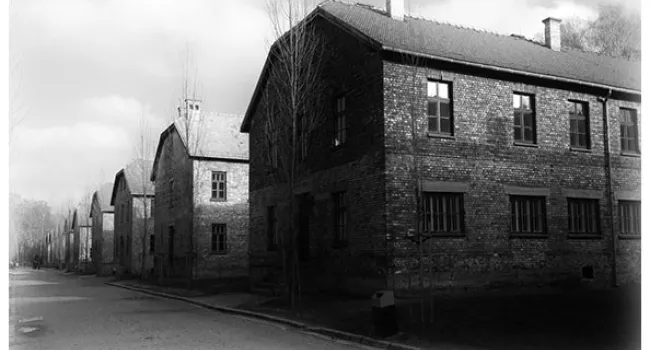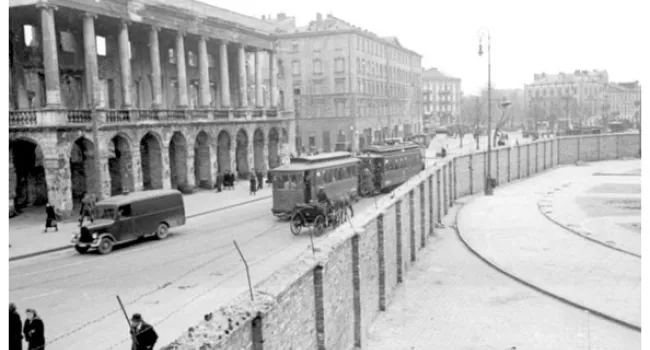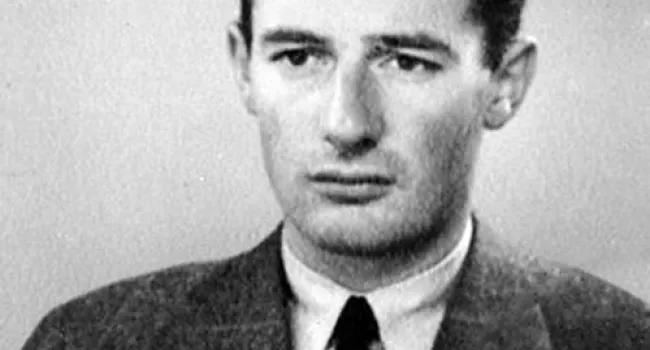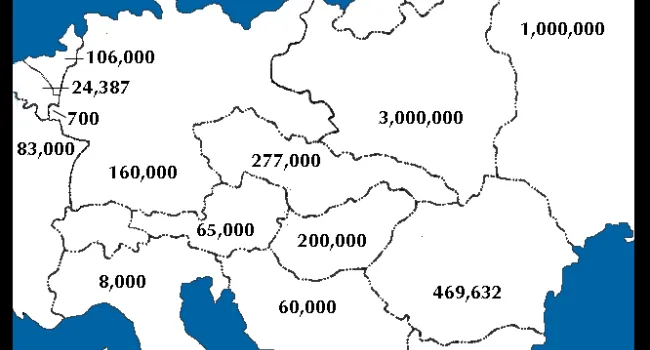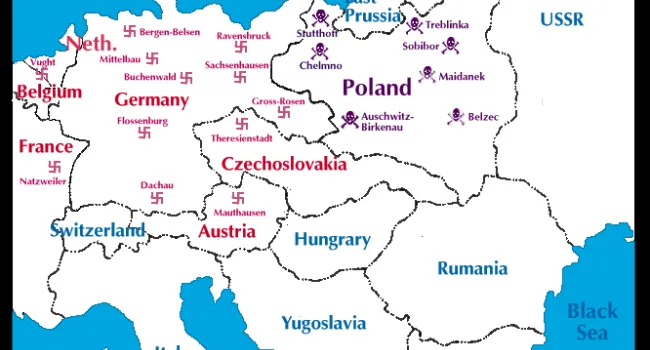"When I tell the story of my life, it takes me quite a while to get back to normal. I get nightmares. I don't mind having nightmares in order that future generations can benefit from it." —Ben Stern, Columbia Concentration Camp Survivor
"The wrongs which we seek to condemn and punish have been so calculated, so malignant and devastating, that civilization cannot tolerate their being ignored because it cannot survive their being repeated." —Justice Robert Jackson, Chief American Counsel at Nuremberg
The magnitude of the Holocaust did not become evident until April 17, 1945, when the Allied forces from the West and the Russian forces from the East linked up at the Elbe River in Germany. As unsuspecting Allied soldiers entered the concentration camps in Germany, they discovered thousands of dying people. Despite the efforts of British and American medical personnel, these prisoners were rescued too late. Many of them died of typhus and other diseases or from starvation in the weeks following liberation.
Displaced Persons
Allied forces were faced with a dilemma. What was to be done with the freed prisoners of war and displaced persons? For most survivors, their homes, family, and friends no longer existed. Those who did return to their homelands were often met with hostility by their neighbors; many of whom had profited by the absence of their Jewish neighbors. When it became clear that other countries would not significantly raise their immigration quotas, the 200,000 Jews liberated from the camps were returned to their native countries. But some 65,000 Polish and Lithuanian Jews had nowhere to go.
Both political and humanitarian reasons contributed to the decision to open the doors of Palestine to the survivors of the Holocaust. In Western Europe and the United States, letters from soldiers in occupied Germany described the horrors of the death camps. In the United States the findings from committees and individuals contributed to public awareness of the Holocaust.
Israel Opens Doors to Refugees
ABOVE: See Map of UN Partition Plan for Palestine, adopted 29 Nov 1947, with boundary of previous UNSCOP partition plan added in green. Read more at https://en.wikipedia.org/wiki/United_Nations_Partition_Plan_for_Palestine
In November 1947, the United Nations General Assembly voted to sanction a partition plan dividing Palestine into a bi-national state. The state of Israel became a haven for the surviving Jews of Europe. The modern state of Israel did not result from the Holocaust. Its roots go back the Zionist political philosophy of the late 19th century, but the Holocaust experience decidedly influenced its establishment.
Nuremberg Trials
Resettlement of refugees was just one of the problems facing the leaders of the postwar world. Equally pressing was the need to understand and bring to justice those who had carried out the Holocaust. This was the purpose of the Nuremberg Trials held in Nuremberg, Germany. An international court, representing the United States, Britain, France, and the Soviet Union, was convened. Most of those who had participated in the Holocaust were charged with committing crimes against humanity. Such crimes were defined as the murder, extermination, enslavement, deportation, and other inhuman acts committed against civilian groups on political, racial, or religious grounds.
The trials took place from November 1945 to October 1946. The 22 who were tried were the political, military, and economic leaders of Nazi Germany. Among the defendants were Hermann Goering, Rudolf Hess, and Albert Speer. At a second set of trials, using American judges from 1946 to 1949, the defendants were high-ranking Nazi officials, including cabinet ministers, SS officers, diplomats, and doctors who had carried out medical experiments. The American Nuremberg Tribunal sentenced 24-four persons to death, 20 to life imprisonment, 98 to other prison terms and acquitted 35.
Defendants Argue: Obeying Orders
Defendants did not deny the charges, but argued basically that in a war situation, they were following orders and could not be held responsible for orders from a superior officer. The prosecutors argued that while war is an evil thing, there is the unwritten custom of war that forbids murder as distinguished from killing in legitimate combat.
Not all war criminals have been prosecuted. Between 15,000 and 20,000 were still alive in the early 1990s. Most are thought to be hiding in Europe, South America, or the United States. The search for these people continues, led by men and women known as Nazi hunters.
Adolf Eichmann Captured
One of the most famous Nazi hunters is Simon Wiesenthal, a Holocaust survivor. He has successfully tracked down over 1000 Nazi criminals. His most famous feat was the discovery of the hiding places of Argentina's Adolf Eichmann, the Nazi official responsible for arranging all transportation of Jews to the camps during the period of the Final Solution. Eichmann was captured in Argentina in 1960 and tried and executed in Israel in 1962. Another well known Nazi hunter is the German-born Beate Klarsfeld. Through her efforts, Klaus Barbie, known as the Butcher of Lyons, was brought to trial in France and sentenced to life imprisonment in 1987.
